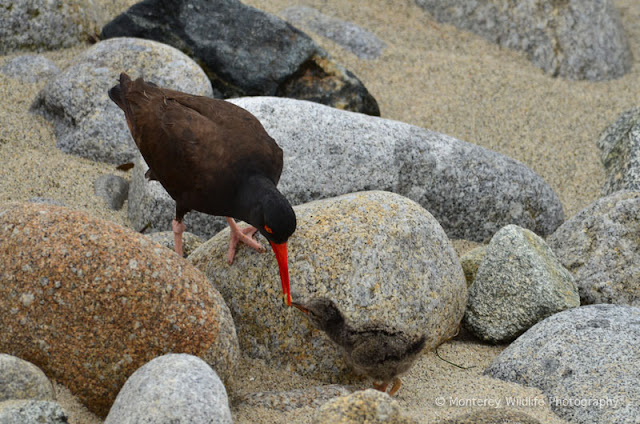In August this past summer a Black Oystercatcher pair were incubating three eggs on an exposed rock well above the high tide line. All of the eggs hatched successfully, much to the enjoyment of the Oystercatcher parents and the people watching. The nest was very near shore along the walking path in Pacific Grove, CA where walkers could linger and watch the parents incubating the eggs and feeding the chicks as they became active. Quite unlike other bird species, the Black Oystercatcher chicks walk within a few hours of hatching and within 24 hours are very active in the nest area.
You can refer back to three Blogs from July 2011 that show the nest area and the parents incubating their eggs.
This location was on the beach below the nest rock, where this chick apparently had fallen while exploring the nest rock above. This was the sixth day after the first chick hatched and this was the last one we observed. The fate of the other two is unknown.
We were fortunate to capture this feeding sequence, as one of the parents brought a morsel that had been pried off a nearby rock. The parent offers the morsel, the chick seems to inspect it, then takes it and swallows it immediately - all within a few seconds.
The next day, this one remaining chick was also missing. The parents had been very attentive for the five weeks of incubation and provided well for all the chicks after hatching. Of course, this area has many predators and we expect this one - and the other two - fell victim to one of the risks of living in a precarious location.
The parents stayed in the area for a few days after the last chick went missing. The first day or so they were calling frequently, perhaps hoping for the chick to reappear.
We wonder if the parents will seek a more protected nesting site in the coming season.

























